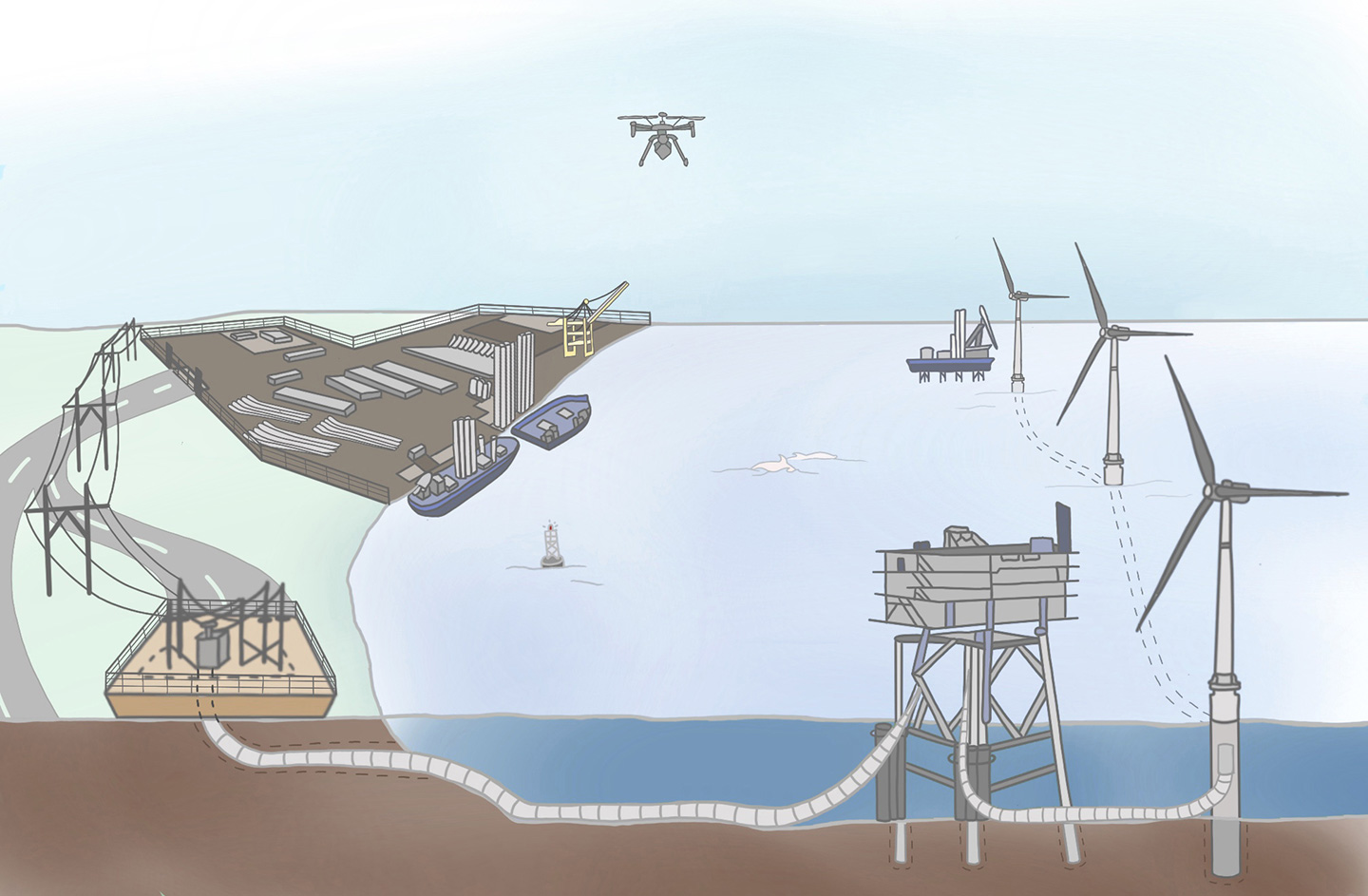In July 2020, Peter Garvey wrote our first blog in this series on the U.S. offshore wind (OSW) industry, which at the time was relatively speculative in terms of whether or not the market would be shovel-ready by 2021. With the installation of Dominion’s Coastal Virginia Offshore Wind pilot project, the first offshore turbine project in federal waters, and subsequent approval of Vineyard Wind 1, our forecast has proved accurate. As of today, the level of activity
in the offshore wind market continues to accelerate. Just last month, the U.S. Department of Interior’s Bureau of Ocean Energy Management (BOEM) held an auction for six lease areas in the New York Bight coastal region resulting in more than
$4.3 billion in high bids from provisional winners. The single highest bid topped over $1 billion alone, with the average lease cost per acre almost 10 fold what was paid for similar leases just four years ago.
The revenue generated from this lease sale is reflective of the continual growth in confidence that investors have on the security of the market.
An Expansive Opportunity Pipeline
The current forecasted OSW pipeline has more than doubled since mid-2020 with more than 40 projects projected, equaling an approximate $135 billion in capital expenditures over the next 10 years. The opportunity pipeline has since expanded beyond
the east coast and is quickly moving into the Gulf of Mexico, the Pacific coast, and Hawaii. The OSW market represents a major evolution in the U.S. energy industry and is poised to have the largest impacts the market has seen in more than 50 years,
signaling a strong path towards domestic energy independence.
The current forecasted offshore wind pipeline has more than doubled since mid-2020 with more than 40 projects projected, equaling an approximate $135 billion in capital expenditures over the next 10 years."
Joe Estrada, Doug Sullivan, and Peter Garvey
Addressing Challenges Associated with Offshore Wind
Amid the excitement for renewable energy projects, questions remain about their reliability and connectivity to the grid. This uncertainty is creating challenges for new projects as well as lingering questions around the retirement of traditional coal,
oil, and gas-powered generation plants. These concerns are being addressed as OSW project developers are closely collaborating with state regulators and public and private entities and developers. Discussions among stakeholders have helped advance
hydrogen research and development and pilot projects that could be coupled with OSW projects to improve dispatch flexibility and reliability. Furthermore, marine ports supporting construction and operations and maintenance for OSW projects are evaluating
strategies to support electrification of their facilities through implementation of electric vehicle fleets and reductions on fossil fuel dependence.

The major challenge of transmission grid connectivity persists, and the high volume of electrons needing onshore points of interconnection (POI) will create logistical challenges for energy companies. Major questions exist around how the industry will
upgrade transmission infrastructure systems to support the energy being generated off the coastlines. The first swath of projects are, in large part, making use of retired coal and nuclear facilities and repurposing infrastructure for electricity
POIs into the grid. However, these infrastructure locations are limited, so major transmission upgrades will be needed. Developers, utilities, and regional transmission organizations (RTO) are working collaboratively to understand the impacts of OSW
on our grid, in an effort to identify cost-effective means for supporting the industry while controlling costs for consumers. Permitting these major projects continues to be the critical path. Beginning the permitting phases of each projects
early and with a highly effective team, is key to successful, timely implementation of onshore infrastructure.
The Future of Energy Independence
Throughout the years, our teams of geospatial and surveying, ports and intermodal, and transmission and distribution professionals have worked together to provide best practices and innovative technologies to energy providers across the U.S., from early
stage implementation through infrastructure maintenance. As we look ahead 12-18 months, there’s great potential for the journey towards energy independence via OSW in the U.S., just as we’ve seen in western Europe and beyond.